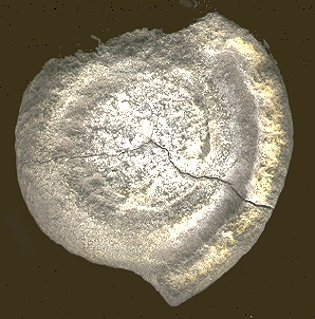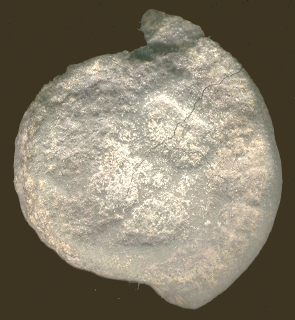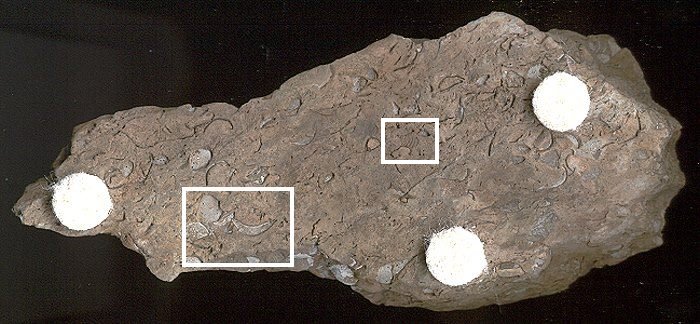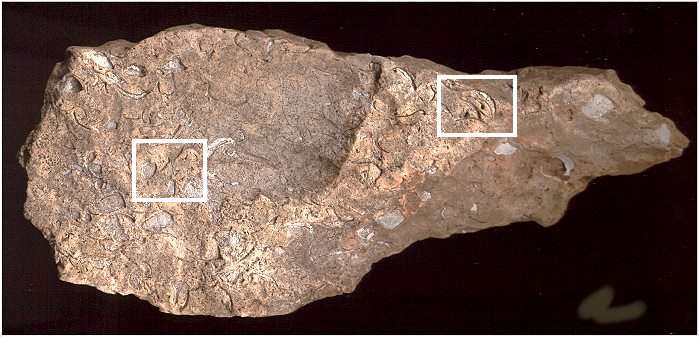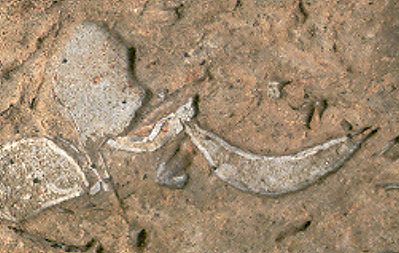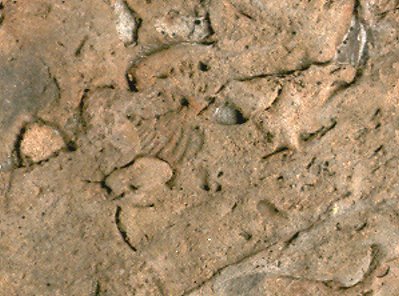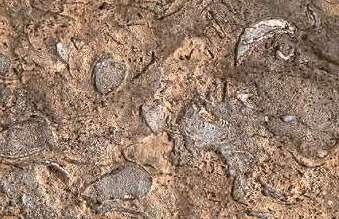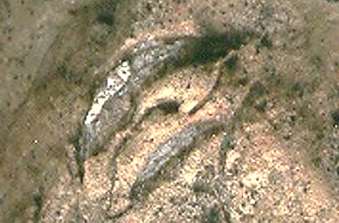|
Identified:
Discussions:
1. & 4. The
crescent moon-shaped fossils
- The
crescent shapes look like cross sections of a brachiopod. The wavy
area may be a part of a brachiopod too...Allen A.
- Probably all
the fossils enclosed in the rock (sandstone?) are brachiopods, of
various groups. The small three lobed shell near the first cross section
is a brachiopod too. The fingernail is just a brachiopod too. Brachiopods
are the most common Paleozoic fossil as they are very numerous in
species, occur together in large numbers, are most likely to be preserved
and lived in a wide variety of environments...Allen
A.
2. ?? Trilobite shaped
fossil
- The second fossil I
think may be Trilbites http://www.kgs.ukans.edu/Extension/fossils/trilobite.html
- Probably all
the fossils enclosed in the rock (sandstone?) are brachiopods, of
various groups. The small three lobed shell near the first cross section
is a brachiopod too. The fingernail is just a brachiopod too. Brachiopods
are the most common Paleozoic fossil as they are very numerous in
species, occur together in large numbers, are most likely to be preserved
and lived in a wide variety of environments...Allen
A.
3. Finger-nail shaped
- Probably all
the fossils enclosed in the rock (sandstone?) are brachiopods, of
various groups. The small three lobed shell near the first cross section
is a brachiopod too. The fingernail is just a brachiopod too. Brachiopods
are the most common Paleozoic fossil as they are very numerous in
species, occur together in large numbers, are most likely to be preserved
and lived in a wide variety of environments...Allen
A.
|
